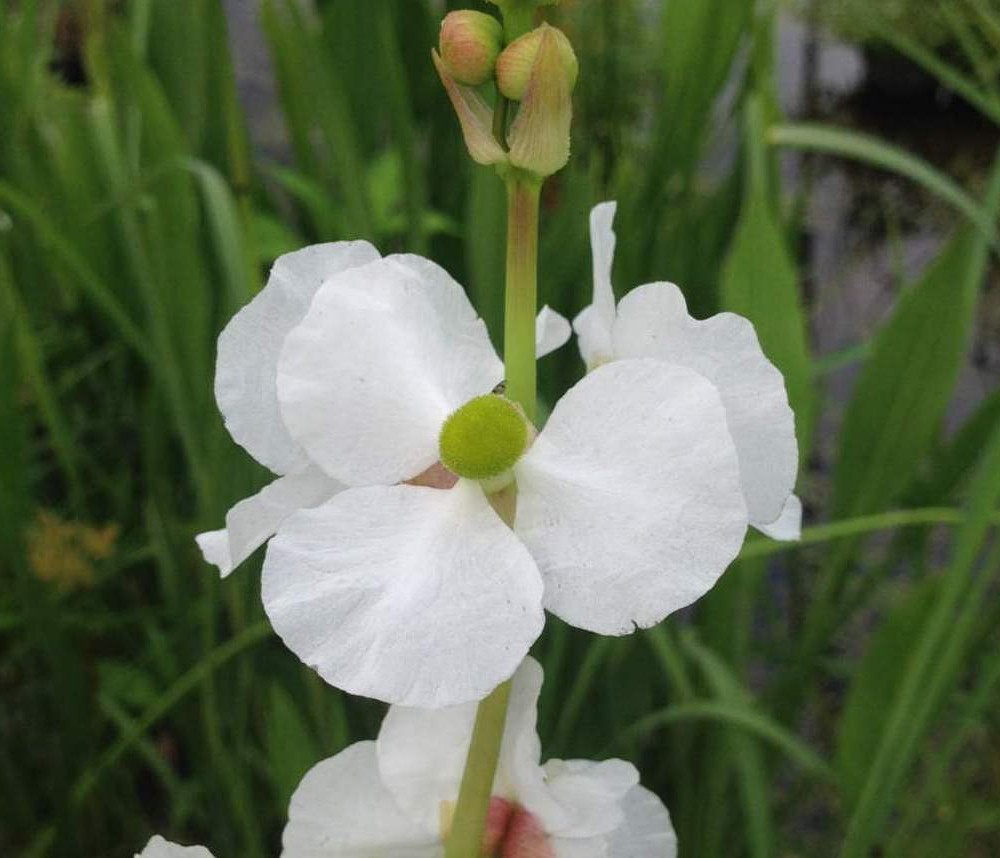Bulltongue
(Sagittaria sagittifolia)

Description
Sagittaria lancifolia, the bulltongue arrowhead, is a perennial, monocot plant in the family Alismataceae, genus Sagittaria, with herbaceous growth patterns. It is native to the southeastern United States. It is known from every coastal state from Delaware to Texas. The species is also considered native to Mexico, Central America, the West Indies and northern South America. It has become naturalized on the Island of Java in Indonesia. The plant is conspicuous for its large, lance-shaped leaves which grow up from underground rhizomes and its showy, white three-petaled flowers which form at the end of long, thick stalks. Each flower has three green sepals, three white or pink-tinged petals, at least six stamens, and pistils which may be in separate flowers. The plant likes to grow in fresh or brackish water and is commonly found in ditches, marshes, swamps and along the shores of lakes and streams. Sagittaria lancifolia reproduces both asexually through spreading rhizomes and sexually through reproduction of copious achenes, a dry fruit each of which carries a single seed. The achenes are dispersed through animal vectors and through hydrochory (dispersal through wind, water, or gravity). The achenes germinate only under light, and with or without available fluid, but the period of their germination is shorter when they are submersed in water. Temperature is a factor, with 100% germination occurring at 20 °C (68 °F). Germination is reduced in anaerobic conditions. Growth is also dependent on temperature.
Taxonomic tree:







